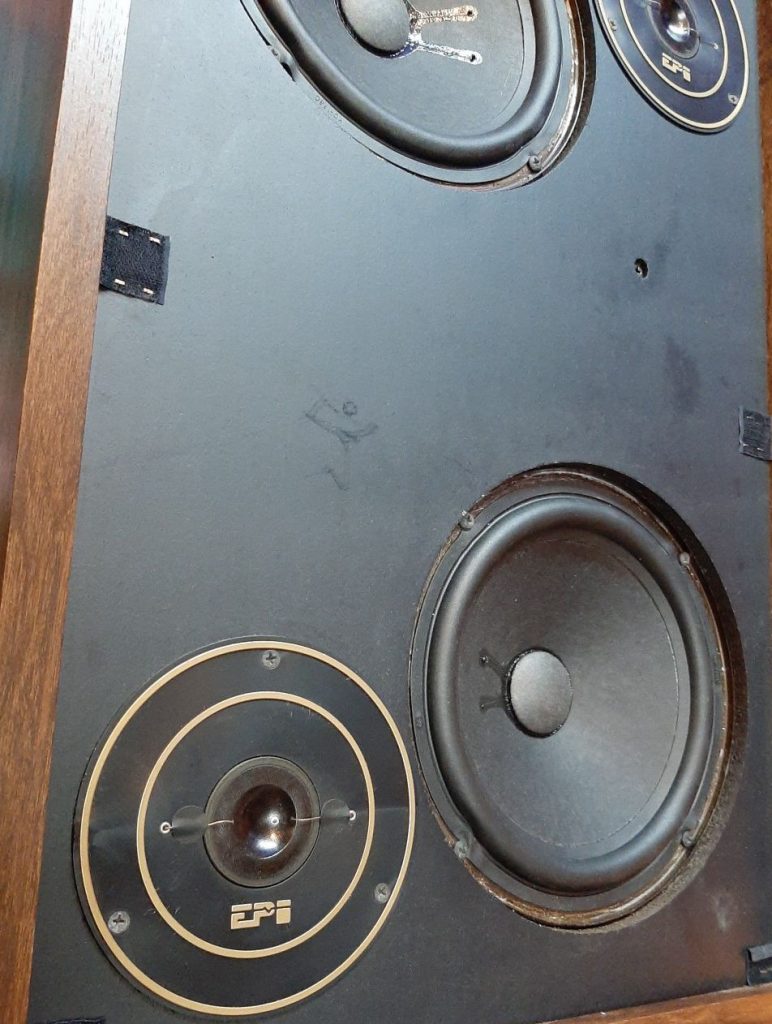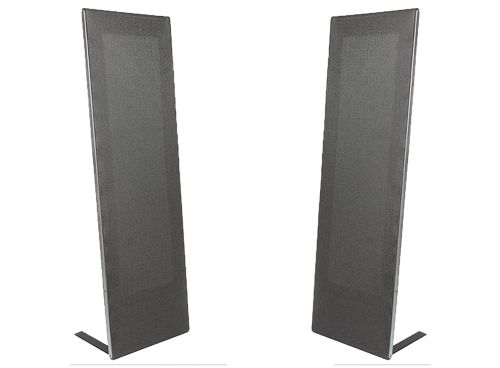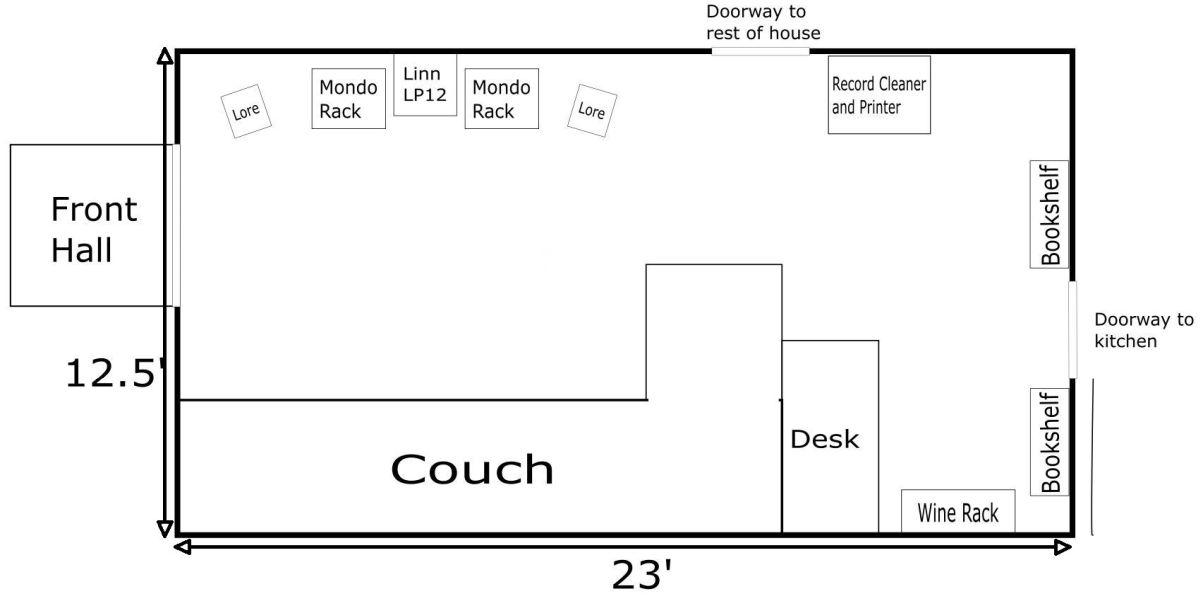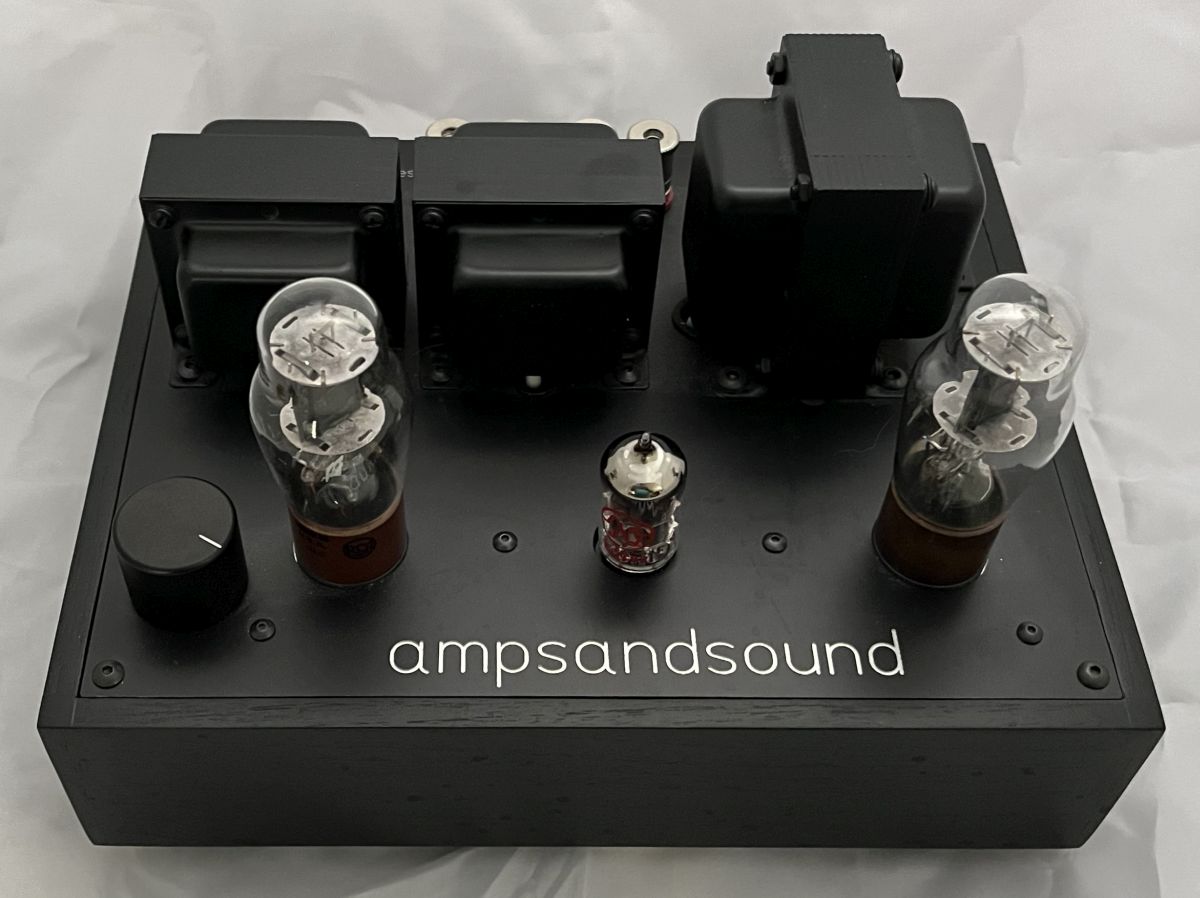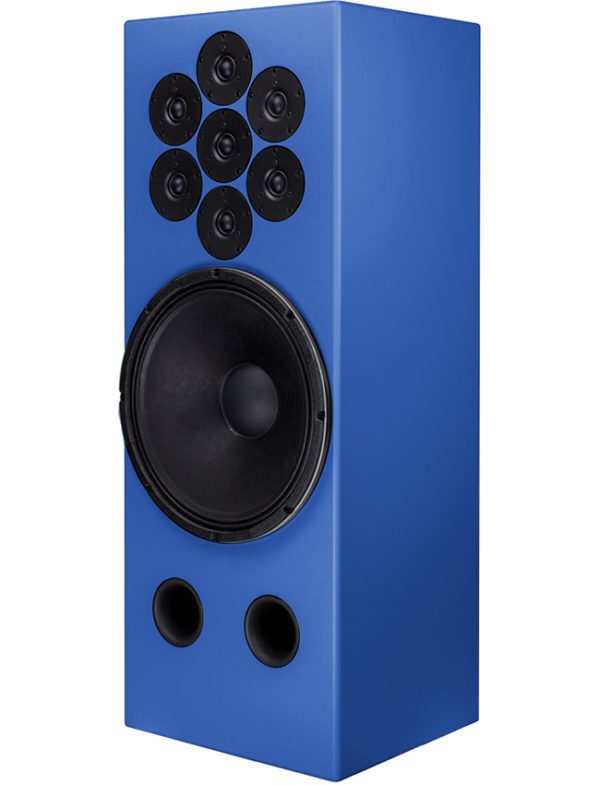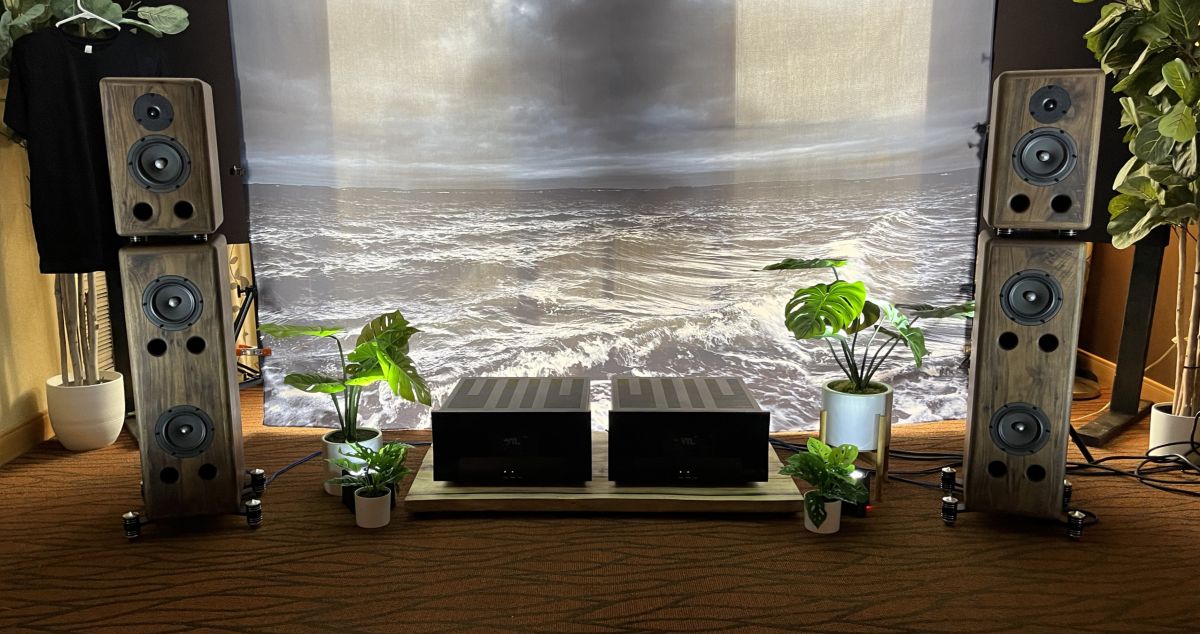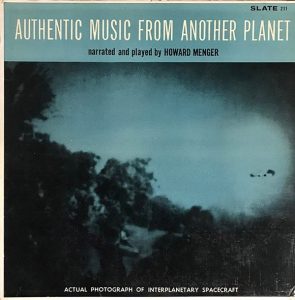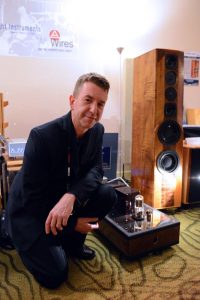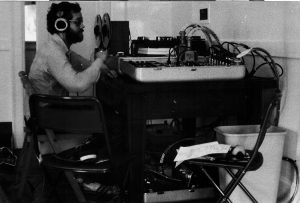Last year I had the opportunity to visit with a friend and listen to their system that included the $329,000 Wilson Chronosonic XVX Loudspeakers. Their system is certainly one version of "state-of-the-art" and one of the very best systems I've ever heard. Over the years I've heard many other very expensive, high quality systems that were attempts at "state-of-the-art," with some being exceptionally good and others maybe not so much. But this isn't about those systems so much as it is about excellence in general and one's expectations of achieving said excellence.
As I listen to systems like that, regardless of the level of actual "excellence" they might achieve, I am always interested by how different these ultra-high-end systems ultimately sound, at least to a reasonably experienced listener. This naturally led me to think about what excellence even means. Can there be different descriptions of excellence? As the capabilities of the best systems improve, shouldn't all "state of the art" systems converge on one similar excellent sound?
Looking specifically at loudspeakers, at some point as the price increases, certain aspects of sound quality should be a given. If you are looking at speakers with six-figure price tags you should reasonably well expect to get:
- Full range response
- Proper tonality
- Lifelike dynamic capability
- Coherence and continuity
- Proper image and soundstage creation
- Superior detail retrieval
Now that doesn't mean all expensive speakers sound the same. Obviously a Wilson does not sound like an MBL, which does not sound like a Magico, which does not sound like Von Schweikert, which does not sound like a NOLA, and certainly not like an Avantgarde. Pick your favorite extreme high-end brands and the final sound from each will still be different. In some significant ways they will be very different. You get to pick and choose the one that fits your personal taste, preferences, and biases the best. But you know from the start that the basic characteristics of high quality sound reproduction will be covered.
Quite honestly, it doesn't take a six-figure price tag to get there, and you should reasonably well expect all these characteristics to be accomplished in any speaker with a five-figure price tag. Unless you have specific brand loyalties or an undying love for expensive tiny mini-monitor speakers, there are plenty of fine full-range, beautiful sounding speakers at or above $10,000.
But what about those of us who don't play in that arena?
Obviously, as the price goes down, the likelihood that all aspects of sound reproduction being handled well goes down too. Having spent the last thirty years of my audio life pursuing the best of "reasonably priced" audio, I can tell you if you are looking at speakers costing less than $5000, you better start understanding your own preferences and biases, as you will have choices to make and compromises to accept.
You will also become aware that there are different ways to achieve excellence, and though most are valid, not all will suit your taste or offer you long term satisfaction. Yet, you'll hear from other people who have those same speakers and love them dearly. It isn't that either of you are right or wrong, but rather that you are both right for yourself.
What do I mean by preferences and biases? Those are specifically what you are looking for in the sound of your system, and what it will take to be satisfied with how your music sounds when played in your listening environment. It also means understanding what you are willing to compromise on and what you are not.
Not everyone actually demands the same thing from their system, and not everyone has really thought it through to know what they really want. That may be why some audiophiles get caught up in a never ending series of upgrades. Are they trying to acquire something they haven't really defined for themselves?
Let's look at this list again:
- Full range response
- Proper tonality
- Lifelike dynamic capability
- Coherence and continuity
- Proper image and soundstage creation
- Superior detail retrieval
We all want those things. We also understand that in a lower cost speaker we can't get them all. Do you know which are most important to you? Would you be able to list those in order of most important to least important for you? Do you understand that each of us probably would list them differently?
For example, I learned over the years that regardless of price, I put good low-end frequency response and extension high on my list. I don't really want to need separate subwoofers to get decent bass. I'm not talking about home-theater-make-the-explosions-shake-the-room bass, but I do want a bass guitar to sound reasonable and have some weight behind it. Response into the mid 30Hz range with the ability to move a little air is important to me. I also like natural tonality throughout the entire range. I don't want excessive chestiness in male voices, or glare in upper-mids that can makes female vocalists sound harsh. If a speaker can be described as "bright" I probably won't go for it. I'll take a slightly rolled off upper octave or two to one that is tipped up or overly aggressive. I also will always prefer a more dynamic and expressive speaker to one that sounds too laid back or constricted.
Areas I am willing to give up a little if necessary are mostly in the "sound" rather than musical side of things. Though soundstage creation and imaging is fun, and at times interesting, I don't find it essential to the point where I'd be willing to trade off tonality or bass response for a more precise image size. As much as I love good stereo reproduction, I'd much rather listen to mono than mediocre stereo, and for a lot of 1960s rock albums, mono is the way to go. And although I am fascinated by what I hear as the level of detail my system can produce improves, I'd be willing to give a little up if necessary, if a less detailed speaker offered more of the characteristics I need. Again, in higher price points you shouldn't have to make these tradeoffs, but that's not where I reside.
I learned a lot about this back in the 1970s while in college, that even though I appreciated the dynamics and punchiness of speakers like the JBL L100 that an apartment-mate had, I preferred the bass character and tonality of my similarly sized, but very different sounding, EPI 180 speakers. Both speakers were very good in their own way, but we understood that our choices were made based on what we wanted out of our system. My apartment-mate felt my system was boring, I felt his was fatiguing. A few years later he sold his JBLs and replaced them the largest Mission speakers (770 maybe). I kept my EPIs until they blew up in 1982 and replaced them with large four-panel Acoustats.
I think that largely describes why, for the most part, I have stayed away from small, stand-mount, monitor speakers. When I look at various publications (print and online) list of recommended choices for "entry level" or lower cost speakers, the lists are usually full of tiny stand-mounted speakers. Most of the time the description includes that they "get the midrange right" and offer a precise soundstage. Now, there's nothing wrong with that and if one of those speakers suits your taste in music then go for it. I'll certainly never tell you that you are wrong if your decision is made for the right reasons.
Though I can admire the midrange tonality, superb sound-staging and intimacy of an LS3/5a or LS50, I also know that ultimately without a subwoofer I could not live with one of those as my only speaker for the long haul. In fact, the only close-to-affordable (for me) small speaker I felt I could live with, was the old, long discontinued Totem Mani-2. Though minuscule in size and terribly inefficient, the few times I heard them (best demo with a 200-wpc Sunfire amp) I was shocked at how deep and powerful their isobaric loaded low end sounded.
Getting back to knowing what you want, the tradeoffs I describe aren't tradeoffs one thinks to make when spending $10,000 or $100,000 (or certainly substantially more) on a set of speakers. Once again, at those elevated prices, you can and should expect full frequency range, true tonality, expressive dynamics, and proper soundstaging. At the extreme end you are looking at more advanced and esoteric characteristics than the bass, tonality and dynamics. However, in a $300 to $3000 speaker, the range I generally write about, those are exactly the type of compromises and decisions you have to make. It is essential you know what is important to you if you don't want to immediately start down the incessant upgrade path.
Because I have very broad taste in music covering many genres, it is important for me that my system be able to play all types of music and not limit my choices of what I want or can listen to. I'm as likely to listen to a classical symphony as I am some minimalist Swiss jazz. Late 60s/early 70s prog-rock might be followed up with Jack Johnson or Taylor Swift. The latest drone-metal incantation from OM might be followed by Mozart flute concertos. My favorite use of Qobuz and Tidal is simply hunting down new things I've never heard before. To accommodate that, any speaker I would consider would have to be able to play all styles equally well.
Just looking at the speakers I've used most of the time in my system since 1997 shows a wide variety of designs and capabilities, but all satisfied my basic of requirements:
Sound Dynamics 300ti
VMPS RM2neo
Direct Acoustics Silent Speaker
ELAC Debut F5
Tekton Design Lore
Tekton Design Perfect SET15
All of those were quite satisfactory in terms of tonality, and all could make a bass guitar, cello or double bass sound right with enough physicality to bring some energy and excitement to the music.
I also have Magneplanar .7, which are my wife's favorite speaker, and which are spectacularly good at many things. But for me, those do require a subwoofer to be considered "full range" in comparison to any of the above listed speakers.
I generally don't view a system in terms of musical style. My system needs to play any genre or style, all equally well. Yet, if you know your taste tends towards specific genres, and you focus on that somewhat exclusively, then you could and should tailor your system around those genres. I know people who only listen to certain types of hard core metal, or only listen to hip hop, or small ensemble jazz, or acoustic folk music. That's fine, but make sure whatever system you assemble plays your music to your liking. That's why it is essential if you go shopping or attend a show to get an idea of what you want to buy, bring your own music to demo. If all you want to listen to is Metallica, or maybe just string quartets, or some such specific demoing with "Hotel California" and "Keith Don't Go" won't tell you much.
Soon I will be publishing reviews of three different speakers that all sell for around the $2000 mark (give or take a little). Though they all look and sound very different from each other, and have different strengths and weaknesses, they all excel at certain things enough that I can say all three are real examples of true excellence in speaker design. Surely people listening to all three will have strong preferences for one over the others. Yet, each in their own way offer truly exceptional performance in very important areas. I could see someone being impressed with any of them enough to want to live with them, provided they pick the one that hits their "must have" characteristics best.
Stay tuned…




